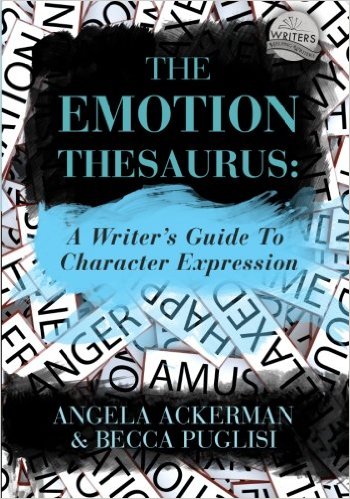Read on for tips for conveying emotion in fiction and creative nonfiction

What is at the basis of any good story?
Emotion, of course.
And, as Angela Ackerman and Becca Puglisi explain in their book The Emotion Thesaurus: A Writer’s Guide to Character Expression, “emotion lies at the core of every character’s decision, action, and word, all of which drive the story. Without emotion, a character’s personal journey is pointless. Stakes cease to exist.”
Plus, when you think about it, if no emotion is conveyed in a story, the plot line is just a series of events that no one wants to read.
That’s because readers read a book to have an emotional experience themselves.
They do this by connecting with the characters and the emotions they experience throughout the story.
Conveying emotions on the printed page can be tricky since so much of all communication is nonverbal, expressed through body language.
As a writer, you need to be able to convey emotion on the written page.
And readers don’t want to be told how a character feels, they want to experience the emotion for themselves.
As Ackerman and Puglisi further explain, we “must ensure that our characters express their emotions in ways that are both recognizable and compelling to read.”
Which is why they have created The Emotion Thesaurus—a great resource for anyone who writes fiction or nonfiction (since creative nonfiction relies on many of the same techniques as fiction).
The book includes dozens of emotions such as:
Adoration
Agitation
Disbelief
Elation
Hatred
Loneliness
Along with a definition of each of these emotions is a list of physical signals for each emotion, internal sensations, mental responses, as well as cues that a character is suppressing that specific emotion or has had that emotion long term (which is helpful for both the writer and readers to know).
There is also a writing tip at the end of the section for each emotion.
Plus, the book begins with a detailed explanation of some common problems writing nonverbal emotions and how to avoid these problems.
As a writing coach (and an author myself), I notice that most writers tend to rely on a small list of actions to convey specific emotions.
And this can make for writing that is repetitive and characters who are a bit flat.
The Emotion Thesaurus can help writers expand their list of actions for each emotion, thereby creating more interesting, more well-developed characters.
Learn to Convey Emotion Through Both Verbal and Nonverbal Communication
The authors show how to use The Emotion Thesaurus, so any writer can use both verbal and nonverbal communication in tandem to create characters and scenes that bring emotions to life for readers, hence providing them with a richer, more emotional experience themselves as they read the story.
The Emotion Thesaurus is available at amazon.com (and, yes, this is my affiliate link, so I receive a small commission if you purchase the book using this link).
I will be recommending this book to all my coaching clients, and I am now using it myself.
All the best,

And don’t forget to join our mailing list!
Just fill in your name and email address, below:








